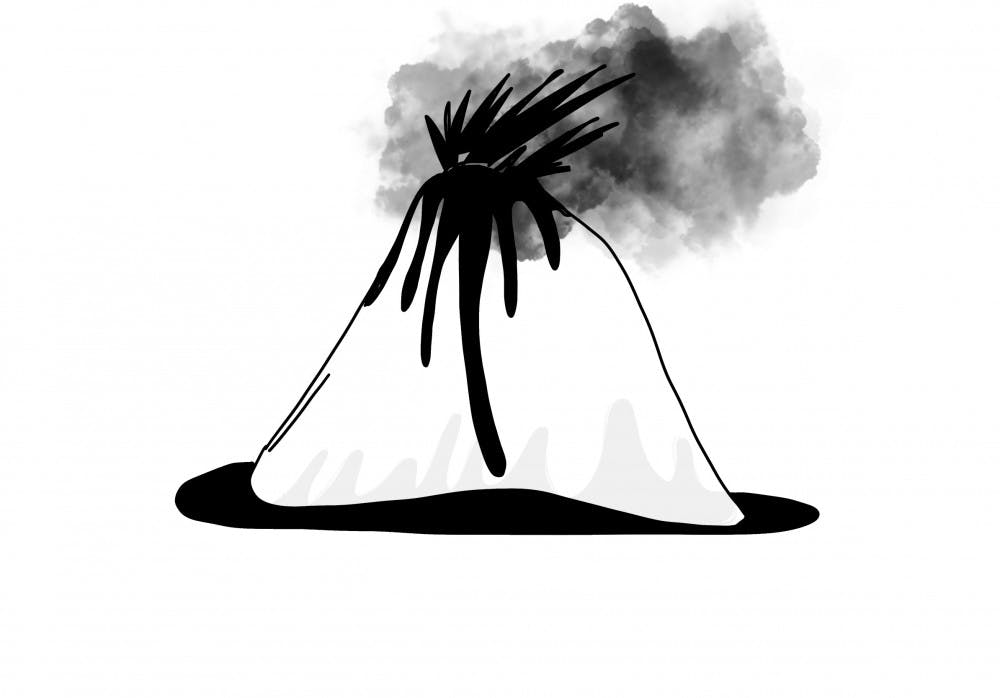In an effort to better understand volcanic activity and its origins on Earth and beyond, University researchers have examined the creation of magma chambers to help explain why these chambers exist at relatively the same depth across the globe.
A recent study by Christian Huber, lead author of the research and an associate professor of earth, environmental, and planetary sciences, and a group of researchers investigated the observed depth of explosive magma chambers, which they found exist only between six and 10 kilometers underground. Huber’s team conducts research on volcanic activity on Earth, the moon and other planets in the solar systems.
“Volcanoes are perhaps the most spectacular demonstration of heat and mass transport through the planet, and not just on Earth but also all four of the inner plants in the solar system,” said Meredith Townsend, assistant professor in the department of earth sciences at the University of Oregon and one of the co-authors of the paper.
Magma chambers are formed through “repeated magma injections,” wrote Agust Gudmundsson, chair of structural geology at the Royal Halloway, Unviersity of London, in a research article unaffiliated with the study. Magma, which is mostly solid and semi-molten rock and “crystal mush,” is collected in rock layers under the surface of the Earth. As magma accumulates within rock layers, specific temperature and pressure conditions develop so that “the magma is drawn towards a molten zone” during explosions, Gudmundsson added.
The researchers hoped to unearth the “optimal depth range,” its causes and why it tends to lie between six to 10 kilometers, Townsend said. Additionally, the team worked to analyze the planetary conditions that allow for magma chamber growth and the effect water may have on these dynamics.
“If you go deeper, the same magma chambers don’t tend to erupt, and if you go shallower, they don’t seem to stay there (or) grow much,” Huber said. “When magma cools down, it crystallizes. Water doesn’t like to go into crystals, so it dissolves in the magma … leading to gas formation.”
When a volcano explodes, analyzing the rocks that come from the eruption allows researchers to understand their origin, Townsend said. “(They) usually point to the same depth over and over again, no matter what volcano you’re at around the world. They tend to come from about six to 10 kilometers deep.”
One of the main challenges of the project was not being able to observe the chambers directly, as well as the “limited ways to infer the state of magma inside the magma chambers,” Huber said.
To conduct their research, the team focused on analyzing the chemical properties of rocks, Huber said. They analyzed the eruption frequency of volcanoes, collected rocks from old eruptions and traveled to places on the Earth with magma chambers that are now exhumed by erosion.
Huber compared their methodology to those used by physicians when conducting brain scans, shooting waves to identify core changes in the properties of the medium through which the wave travels. Shooting waves long distances, when combined with many hidden objects underneath Earth’s surface, can affect wave travel and make the research difficult.
The team set out to build a “physical interpretation of the processes (of magma formation) and then codify that into equations” to identify the causes and consequences of volcanic activity, Huber said. They built physical models, attempting to “simulate a broad range of conditions,” Townsend said.
“I think we ran the model hundreds or thousands of times to make sure we’re covering a parameter space that’s representative of all the possible conditions on the Earth.”
The team also looked at “volcanoes on different planetary bodies,” Huber said, adding that “Mars has the biggest volcano in the solar system, about 20 kilometers high. … Even icy bodies have their own type of volcano — it’s a feature that connects deeper parts of planetary bodies.”
When working on planetary bodies outside of Earth, the team had and still has limited access to the same kinds of data that might be collected on Earth. As a result, it was “more difficult to make a distinction between different hypotheses,” Huber said.
The team has also conducted research on volcanic activity on the moon: “there is remote-sensing satellites that have been launched some time ago that map the surface chemistry through remote sensing spectroscopy pretty well. One of the things that they measured is the proxy for water … The moon should be decently dry, and we see patches that are more water rich than expected, and they correlate with places where we know there was three or four billion years ago relatively large volcanic eruptions.”
The team is currently conducting research projects on Mercury, Mars and the moon and has already worked with sample returns from the moon. “The way that magma is generated and stored in the crust is really important for understanding how planets work,” Townsend said.





